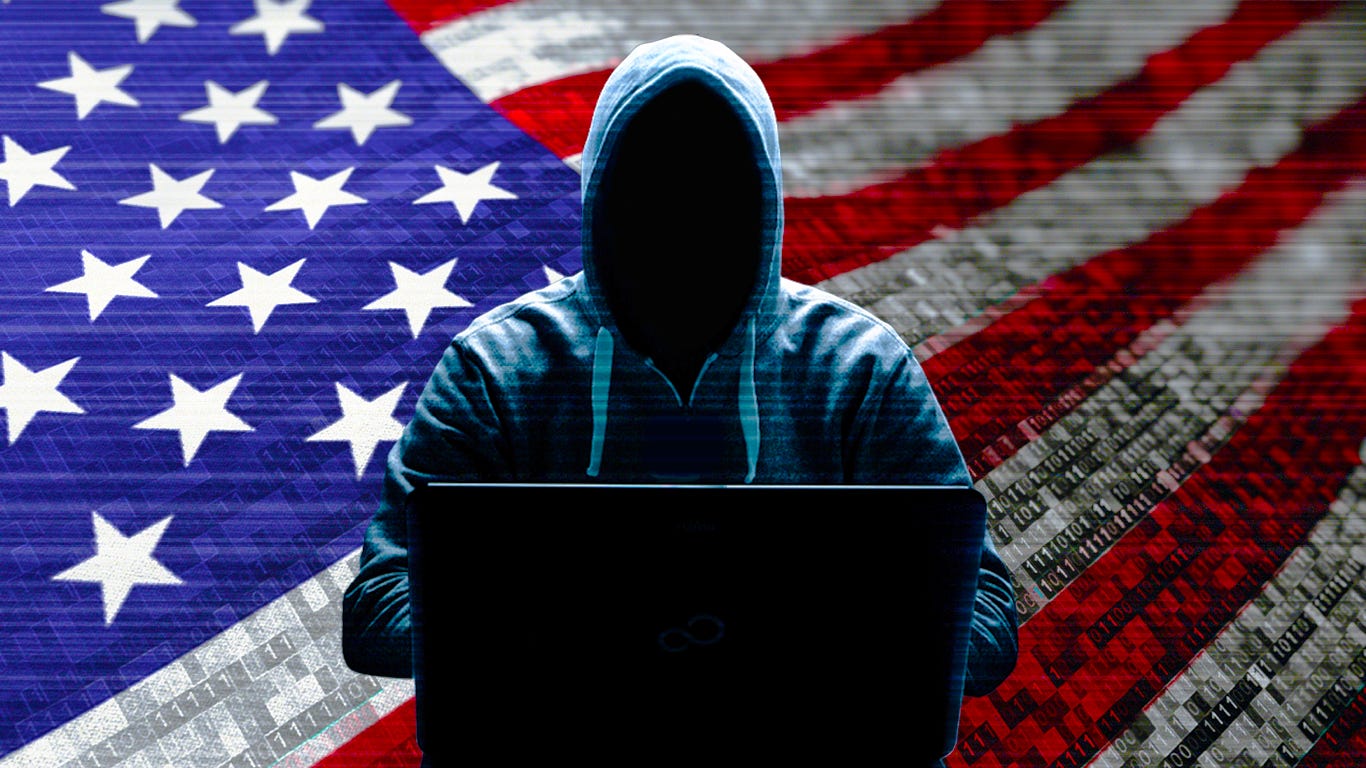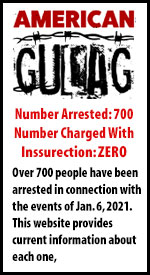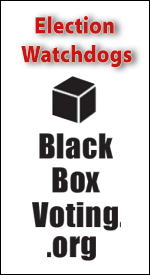Video: Hacking America's Computerized Voting System
110 Articles Affirm America's Computerized Voting System Is Online, Compromised, and Vulnerable To Hackers: Documented, Linked, and Quoted

“Forty-three percent of American voters use voting machines that researchers have found have serious security flaws including backdoors. These companies are accountable to no one. They won’t answer basic questions about their cyber security practices and the biggest companies won’t answer any questions at all. Five states have no paper trail and that means there is no way to prove the numbers the voting machines put out are legitimate. So much for cyber-security 101… The biggest seller of voting machines is doing something that violates cyber-security 101, directing that you install remote-access software which would make a machine like that a magnet for fraudsters and hackers.”
This statement was said by Senator Ron Wyden, D-Ore., during a March 21, 2018, U.S. Senate Intelligence Committee hearing, one of the numerous hearings that Congress convened to discuss election security following the 2016 election.
Wyden, his congressional colleagues, and the corporate media would spend much of the next four years discussing their many concerns about the security of the U.S. election system.
Computerized voting in the United States is largely a secretive and privately-run affair conducted out of the public eye with very little oversight.
The corporations that run every aspect of America’s elections, from voter registration to casting and counting votes, are subject to limited regulation and public scrutiny.
The companies are privately-owned, making information about ownership, finances, and technology difficult to obtain.
The software source code and hardware design are kept as trade secrets and therefore difficult to study or investigate.
With both major parties doubting the integrity of the last two elections, the voting machine vendors have lost the trust of the American people. And, deservedly so.
Considering J.P. Morgan, Facebook, and the Pentagon have all been hacked in recent years, it is illogical to believe that voting machine manufacturers working on limited budgets are somehow immune to cyber intrusions.
Senator Amy Klobuchar, D-Minn., discussed her concerns with the three main voting machine manufacturers in the 2020 HBO Documentary, Kill Chain: The Cyber War on America's Elections:
“We’re very concerned because there are only three companies. You could easily hack into them. It makes it seem like all these states are doing different things, but in fact, three companies are controlling them.”
Elections Systems & Software, Dominion Voting, and Hart Intercivic account for about ninety percent of U.S. election equipment. These vendors supply the equipment at the epicenter of America’s elections:
-
Electronic Poll Books: An electronic poll book (also called “e-poll book”) is a computer-based system that allows poll workers to look up voters and either check them in to vote or identify the person as not in the list of voters permitted to vote at the polling location.
-
Optical Scanners: Optical scanners include both marksense and digital image scanners in which voters mark paper ballots that are subsequently tabulated by scanning devices. Optical scan voting systems can scan and tabulate ballots marked by hand or those marked by a ballot marking device. High-capacity batch-fed optical scan tabulators are used in some jurisdictions to handle larger volumes of central count ballots.
-
Direct Recording Electronic (DRE): A direct recording electronic voting system (often touchscreen) is a vote-capture device that allows the electronic presentation of a ballot, electronic selection of valid contest options, and the electronic storage of contest selections as individual records. The voter’s choices are stored in DREs via a memory cartridge or smart card and added to the choices of all other voters.
-
Ballot Marking Devices (BMD): A ballot marking device allows the electronic presentation of a ballot, electronic selection of valid contest options and produces a machine-marked paper ballot, but does not make any other lasting record of the voter’s selections.
-
Hybrid Voting Systems: Hybrid voting systems combine elements of optical scanners, DREs, or ballot marking devices.
-
Election Management System (EMS): A set of applications that handle pre- and post-voting activities, including ballot layout, programming media for voting equipment, importing results data, and accumulating and reporting results.
Contrary to popular belief, all electronic voting equipment can be hacked because all such equipment must receive programming before each election from memory cards or USB drives prepared on election management systems which are often computers not only connected to the internet but also running out-of-date versions of Windows.
If a county election management system is infected with malware, the malware can spread from that system to the USB drives, which then would transfer it to all the voting machines, scanners, and ballot-marking devices in the county.
In 2008, the most serious breach in Pentagon history came from a single USB drive infected with a virus that spread swiftly through the Defense Department’s Secret Internet Protocol Router Network – the classified SIPRNet – as well as the Joint Worldwide Intelligence Communication System used by the U.S. government’s top intel agencies.
After that hack, the Department of Defense severely restricted the use of USB drives, established programs to control and track personnel authorized to use them, and largely barred users by setting up computers without USB ports or restricting certain computer users to not recognize flash drives.
In contrast, the majority of the U.S. election system is programmed by local county election officials or third-party vendors, who are plugging previously-used USB drives into computers connected to the internet, before plugging those same USB drives into the optical scanners, tabulators, and voting machines that collect, count, and determine election results.
In 2019, the Associated Press reported that the vast majority of 10,000 election jurisdictions nationwide, including numerous swing states, were still using Windows 7 or older operating systems to create ballots, program voting machines, tally votes, and report counts.
Windows 7 reached its “end of life” on Jan. 14, 2020, meaning Microsoft stopped providing technical support and producing “patches” to fix software vulnerabilities.
Furthermore, not only are U.S. elections being programmed on computers running out-of-date software, but voting machine manufacturers have also installed remote-access software and wireless modems connecting voting machines directly to the internet.
NBC News reported ten months before the 2020 election that ES&S, the largest U.S. election machine vendor, had installed at least 14,000 modems to connect their voting machines to the internet even though many election security experts had previously warned that voting machines with modems were vulnerable to hackers:
Dominion Voting Systems, the second-largest U.S. election machine vendor, which has given public presentations acknowledging their use of modems in their voting machines, was also discovered to be running remote-access software during the 2020 election:
In Georgia, 20-year election worker, Susan Voyles, testified that Dominion Voting Systems employees “operated remotely” on her ballot-marking devices and poll pads after the team experienced some technical problems with their machines.
In Wisconsin, the Office of Special Counsel (OSC), headed by retired state Supreme Court Justice Michael Gableman, also found that Dominion and ES&S voting machines were online and connected to the internet.
In Michigan, attorney and Secretary of State candidate, Matt Deperno, discovered a Telit LE910-SV1 modem chip embedded in the motherboard of an ES&S DS200 voting machine.
Through these modems, hackers could theoretically intercept results as they’re transmitted on election night — or, worse, use the modem connections to reach back into voting machines or the election management systems to install malware, change software, or alter official results.
Therefore, not only are hackers able to penetrate elections through vulnerable USB cards and election management systems, but also through the very voting machines themselves.
This isn’t a problem exclusive to elections — all computers are hackable — and that is why election security experts have always recommended hand-marked paper ballots and rigorous post-election audits.
This also isn’t a partisan issue, both Democrats and Republicans are well aware of the secrecy, privatization, and hackable hardware and software that runs America’s elections.
After the 2016 election, Clinton supporters and the corporate media would spend the next four years talking about how compromised America’s computerized voting system was.
Sen. Ron Wyden, Sen. Amy Klobuchar, and Sen. Kamala Harris held numerous congressional hearings where they explained that it was too easy to hack voting machines, too easy to find unattended voting machines and too many voting machines were connected to the internet:
After the 2020 election, Trump supporters were censored and de-platformed (I was banned from Twitter) for pointing out the very same vulnerabilities that Democrats and the corporate media had spent the last four years discussing.
Regardless of politics, these vulnerabilities are very real, they still exist today, and they are best explained by the computer scientists who have spent the last two decades researching them.
Professor Matt Blaze, Georgetown University, Computer Science:
“I come here today as a computer scientist who spent the better part of the last quarter century studying election system security… To be blunt, it’s a widely recognized really indisputable fact that every piece of computerized voting equipment in use at polling places today can be easily compromised in ways that have the potential to disrupt election operations, compromise firmware and software, and potentially alter vote tallies in the absence of other safeguards. This is partly a consequence of historically poor design and implementation by equipment vendors but it’s ultimately a reflection of the nature of complex software. It’s simply beyond the state of the art to build software systems that can reliably withstand targeted attacks by a determined adversary in this kind of an environment…Just as we don't expect the local sheriff to singlehandedly defend against military ground invasions, we shouldn't expect county election IT managers to defend against cyber attacks by foreign intelligence services.”
Professor J. Alex Halderman, University of Michigan, Computer Science:
“I’m a professor of computer science and have spent the last ten years studying the electronic voting systems that our nation relies on. My conclusion from that work is that our highly computerized election infrastructure is vulnerable to sabotage and even to cyber attacks that could change votes... I know America’s voting machines are vulnerable because my colleagues and I have hacked them repeatedly as part of a decade of research studying the technology that operates elections and learning how to make it stronger. We’ve created attacks that can spread from machine to machine like a computer virus and silently change election outcomes. We’ve studied touch screen and optical scan systems and in every single case we’ve found ways for attackers to sabotage machine and to steal votes…In close elections, an attacker can probe the most important swing states or swing counties, find areas with the weakest protection, and strike there. In a close election year, changing a few votes in key localities could be enough to tip national results.”
Professor Andrew Appel, Princeton University, Computer Science:
“Installing new software is how you hack a voting machine to cheat. In 2009, in a courtroom of the superior court of New Jersey, I demonstrated how to hack a voting machine. I wrote a vote-stealing computer program that shifted votes from one candidate to another. Installing that vote stealing program in a voting machine takes seven minutes per machine with a screwdriver. But really the software I built was not rocket science. Any computer programmer could write the same code. Once it’s installed, it could steal elections without detection for years to come… Other computer scientists have demonstrated similar hacks on many models of machine. This is not just one glitch from one manufacturer of machine, it’s the very nature of computers. So how can we trust our elections when it is so easy to make the computers cheat?”
Americans deserve to know every single line of code and every single piece of hardware that counts their votes.
Voters should demand election security legislation prioritize hand-marked paper ballots and rigorous post-election audits.
Every voter should have the option to use a hand-marked paper ballot at the polling place.
Voters should also demand, for a start, to ban remote access software, wireless modems, direct-recording electronic, and ballot-marking device voting systems.
America’s elections must shift from a proprietary, privately-owned system to one that is open-source, available for public inspection, and completely owned by the American people.

















